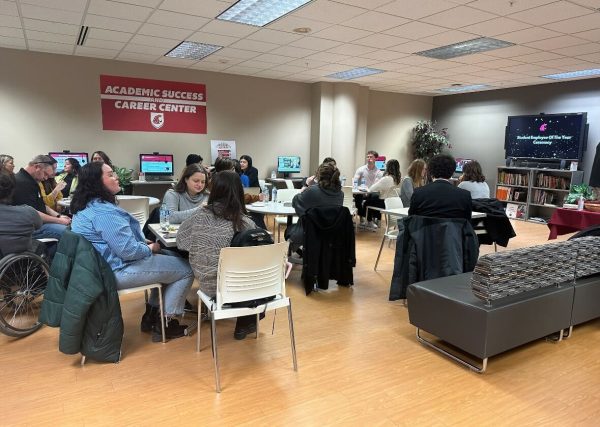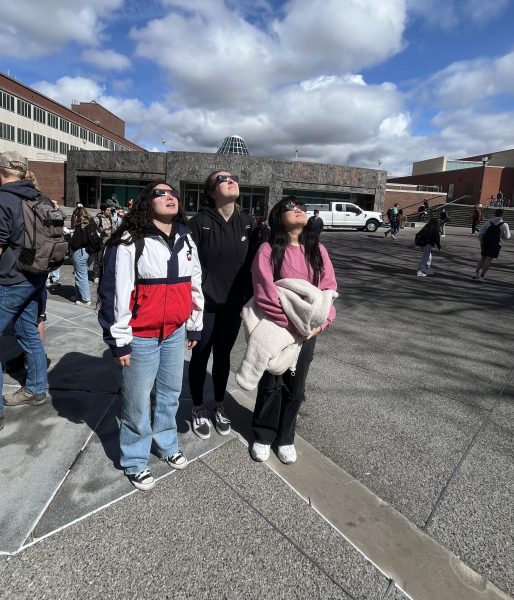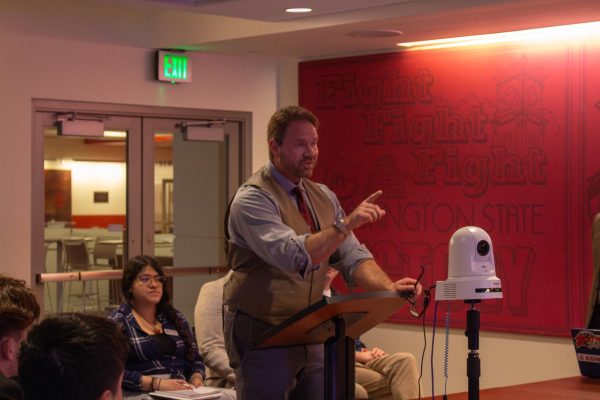NSF grant brings international Smart Home project to WSU
September 4, 2013
The WSU “Smart Home” research project received a National Science Foundation (NSF) grant that will make the project the largest of its kind in the world.
WSU researchers have been working on the Center for Advanced Studies in Adaptive Systems (CASAS) Smart Home Project to develop homes of the future. The NSF grant will allow the research project through the WSU School of Electrical Engineering and Computer Science to expand on an international scale.
“This feels great, because not only are we receiving the funding, but we are also recognized by our peers,” Huie-Rogers Chair Professor in the School of Electrical Engineering and Computer Science Diane Cook said.
Cook said after the grant was initially applied for, peers in the same field reviewed the project and chose it.
The grant will not only expand the smart house project, but it will also allow researchers to create a larger data set, she said.
“For us as researchers, it means we’ll have the largest collection of behavioral data collected in people’s own homes,” Cook said. “This opens up tons of avenues for more research and design.”
Aaron Crandall, an assistant research professor with CASAS, said the grant is focused on large-scale data collection.
“If you get enough data from enough people and enough places, you can start to solve more problems,” Crandall said.
With the grant the amount of functioning smart houses will increase in number and location.
“We currently have 23 smart homes running, with them spread out between Pullman, Seattle, and Spokane,” he said. “NSF gives us 60 more smart houses internationally, with houses in the U.K., Germany, Australia, New Zealand, and India.”
Crandall said this huge expanse makes the already-large research project even larger.
“When it comes to smart house research, we are the largest in the world,” he said.
The Smart Home project is focused on the research and development of sensors within a home that can interpret data to inform residents or make decisions on its own, Crandall said.
“This makes our primary research artificial intelligence–we want computers to make decisions in the house on their own and try to develop different logarithms to do that,” he said.
Cook said the grant will be a great opportunity to improve the technology that is being developed to make these homes “smart homes.”
“The technology is to fill a home with sensors that monitor movements, and then we interpret these, which allows us to understand people’s daily routines,” she said. “Understanding the impact of daily routines can help us see and create ways to improve health and wellbeing, environmental impacts and consumption, through observing and then changing habits.”
Crandall said one of the large targets for this project is elder care, which involves working with medical professionals to improve sensors in homes to help older adults live in their homes longer.
“The goal is to allow people to live longer in their own homes,” he said. “Smart homes can provide data to residents about their health status, give them reminders, and can contact nurses, doctors or residents.”
Work is also done observing behavioral patterns in the home, and then using the smart technology to improve environmental efficiency, such as turning lights on and off for you as you enter or exit rooms, Crandall said.
Nuances such as these require a wide variety of experts. People in all different fields are working on the project, he said, such as mechanical engineers, computer science experts, as well as clinical psychologists, nurses, and doctors.
With the NSF grant, elder care focused smart homes will increase from 20 to 40, doubling the amount of research that can take place and improvements that can be made, Crandall said.





















